The history of disasters in the aviation industry dates as far back as 1785. The first air crash involving a powered aircraft was the crash of a Wright Model A aircraft in Virginia on the 17th of September, 1908.
Despite technological advancement, air travel has proven dangerous. The aviation industry has not been without dark moments in history.
The analysis of this dataset was carried out in Microsoft Power BI.
PREPARING THE DATA
The airplane crash data was downloaded online from here and loaded into Power BI.
ABOUT THE DATA
The plane crash data set has 5268 rows and 13 columns that contain information connected to each plane crash record.
It includes the date and the time of the crash, the location where it occurred, the aircraft operator, flight number, the route flown, registration number, number of people on the plane, number of people aboard that died, number of people that died on the ground and a summary of how the crash happened.
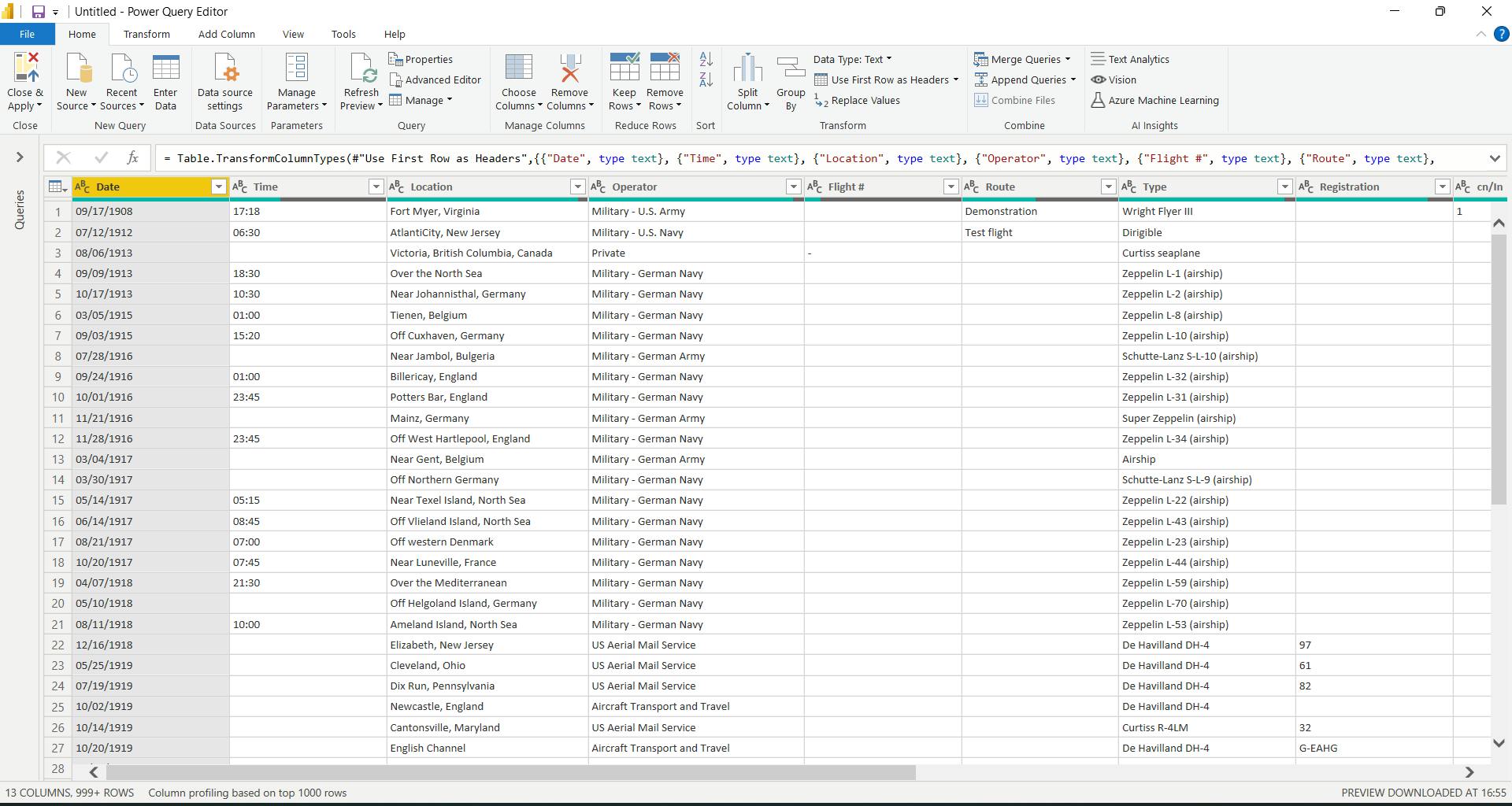
DATA CLEANING
- This data got cleaned in Power Query.
- There were no duplicate entries.
- The flight number column was 80% empty and removed.
- The columns that contain the Time, route, and registration number of the plane, were removed because they are not relevant to this analysis.
- The month and year of the accident were extracted from the "date of accident" column using the "MONTH" and "YEAR" functions.
- The CALENDAR function was used to create a dates table that shows all the dates from 17/09/1908 to 06/08/2009
- The COLUMN BY EXAMPLE feature(flash fill in Excel) was used to obtain the city or country from the Locations column.
- Used the NEW MEASURES feature to calculate the total air crash recorded, total crash years, deaths aboard, deaths on the ground, total deaths, and total survivors.

We will be using this data to answer the following questions:
How many plane crashes occur each year?
Each year, how many people died? How many survived?
What locations recorded the most plane crashes?
What aircraft operator recorded the most plane crash?
What types of aircraft crashed the most?
What locations recorded the most deaths?
DATA ANALYSIS
- 5268 Air crashes happened in the 98years of crash history at various locations.

- In 1972, there were 104 plane crashes recorded, followed by 1968 with 96 plane crashes, and 1989 with 95 plane crashes.
There was a Steady increase in plane crashes between 1940 and 1946 when the number of plane crashes rose from 18 to 80.

- In 2001, there were 7039 deaths and 713 survivors.
What happened in 2001?
On September 11th, 2001, two Boeing aircraft were hijacked by Terrorists and crashed in New York. Everyone on board died including the terrorists. About 5500 people at and around the impact zone of both aircraft also died.

- Brazil had the highest plane crashes, followed by Alaska and Russia.
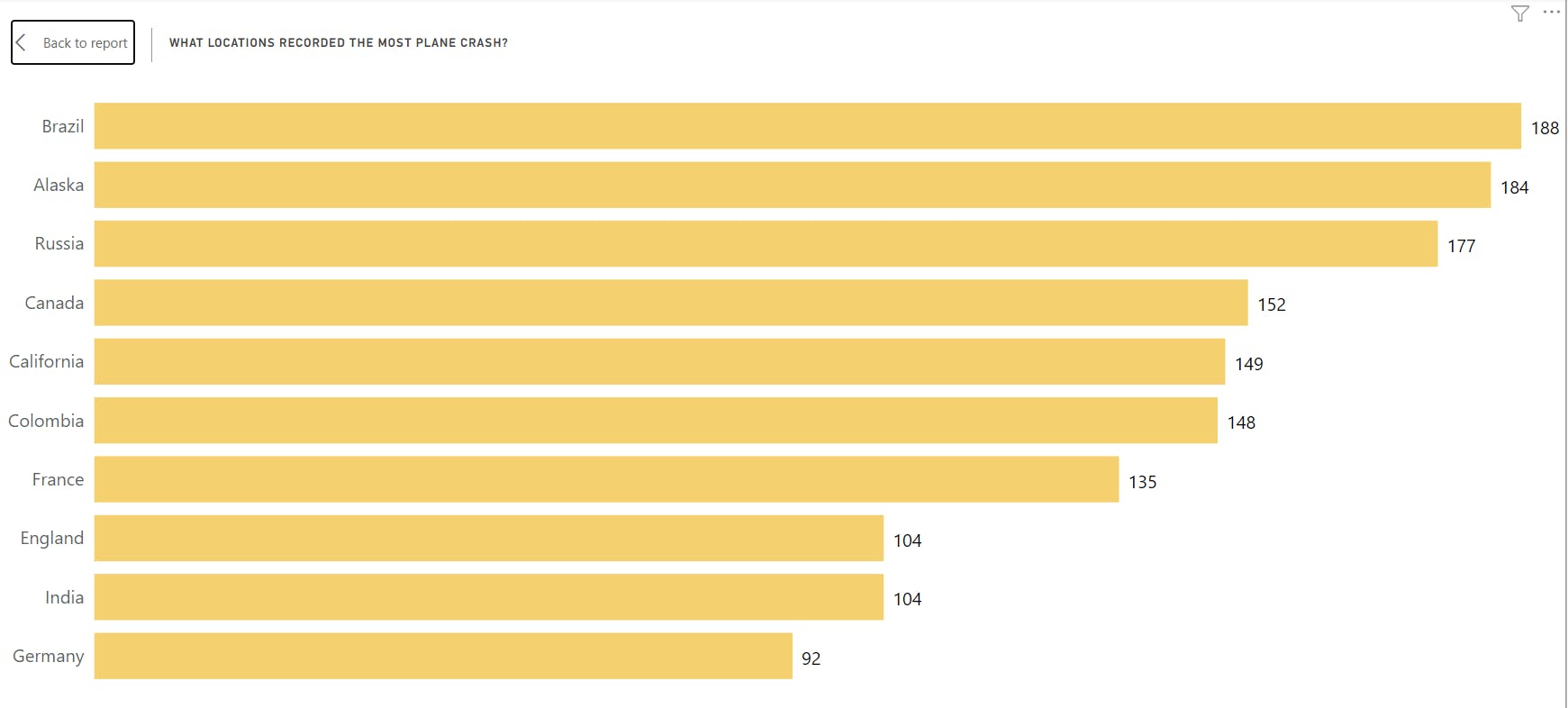
- Airplanes controlled by Aeroflot aircraft operators crashed 179 times.
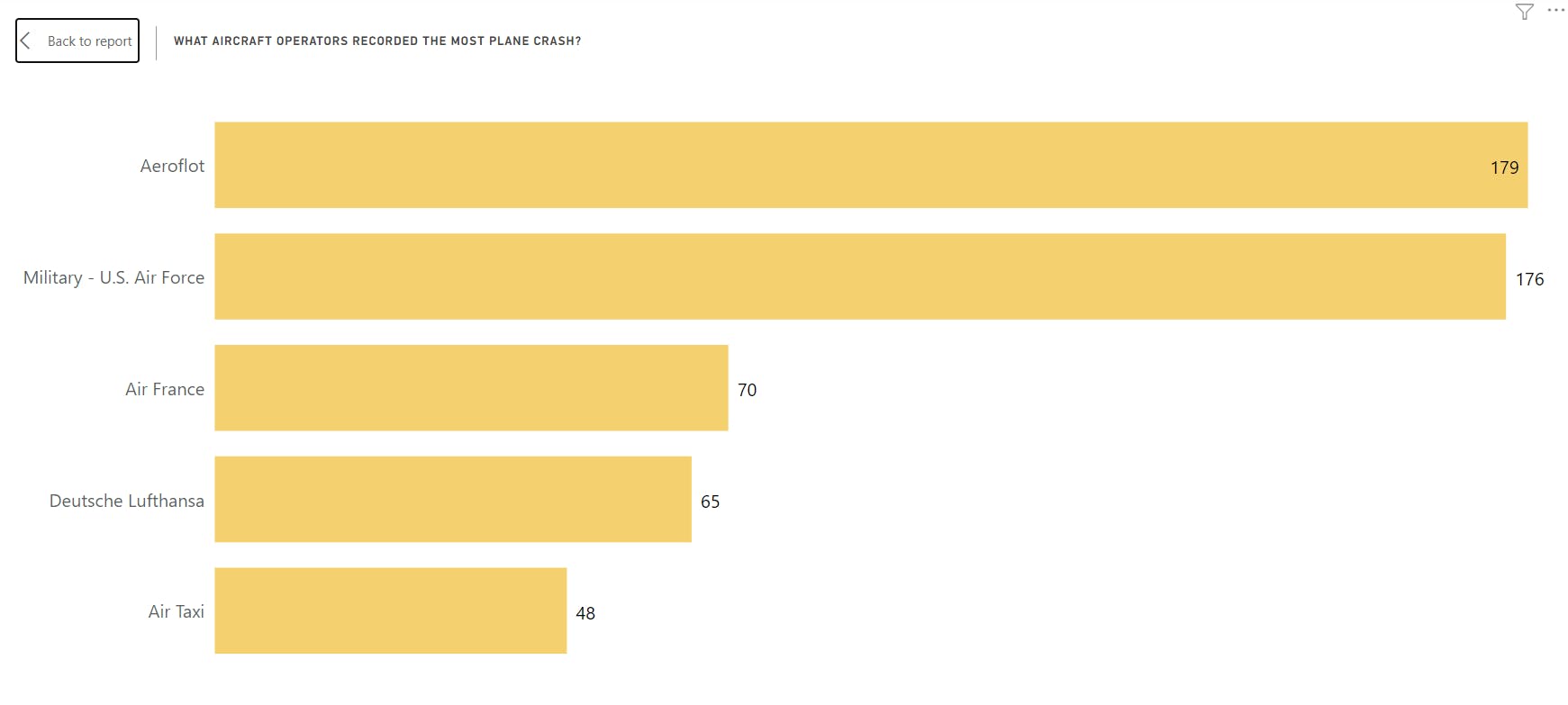
- 334 Douglas DC-3 aircraft crash was recorded.
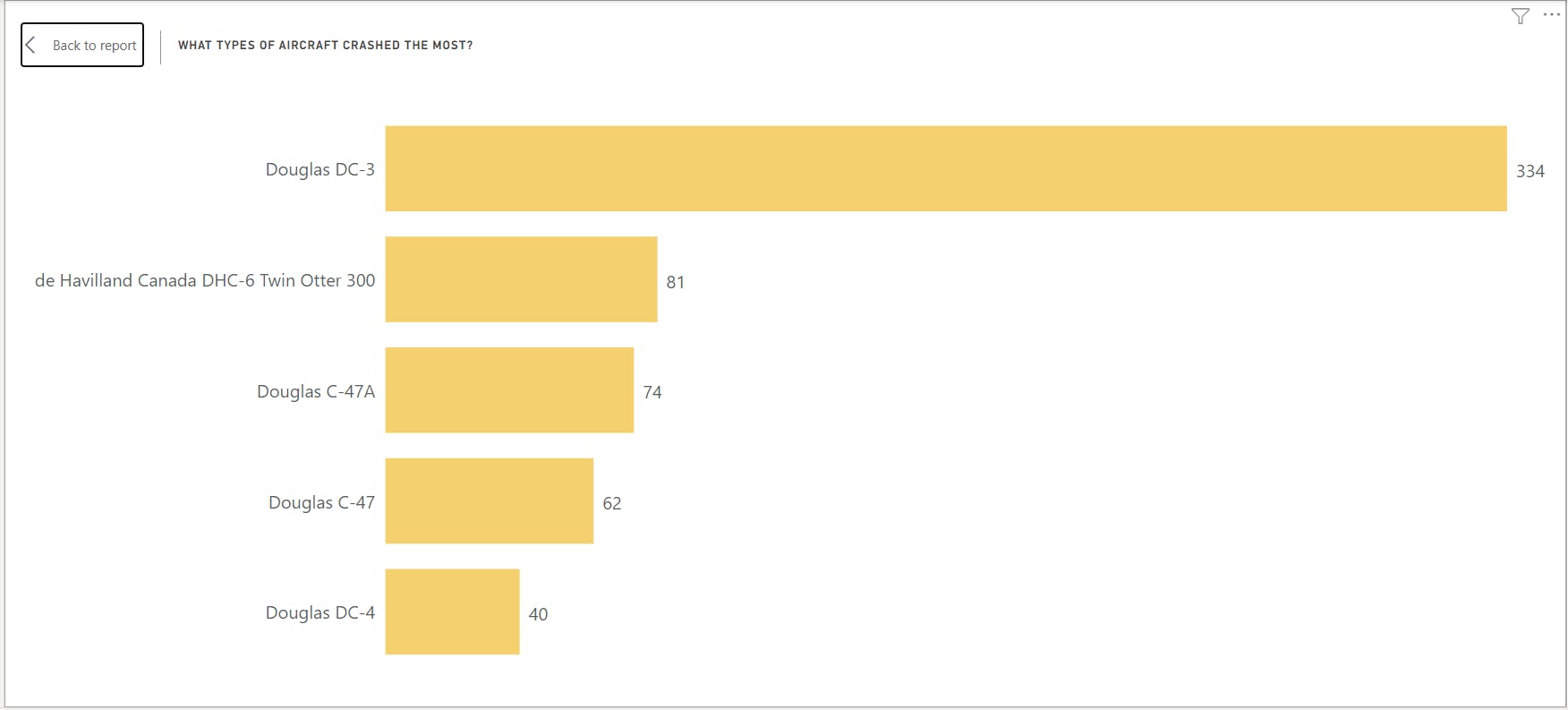
- A total of 7,156 deaths were recorded in New York, followed closely by 6877 deaths in Russia.
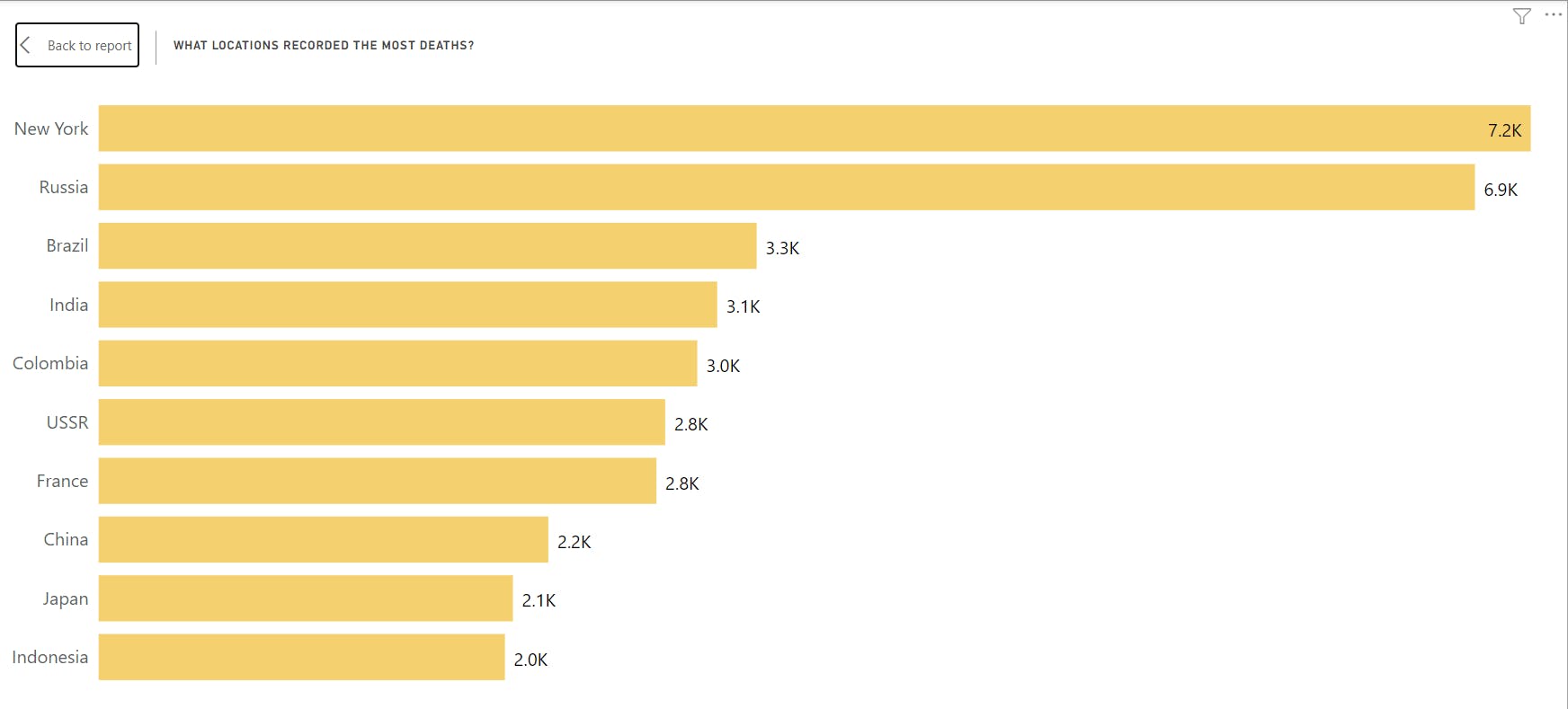
- From the summary given in the reports of each crash. The suggested reasons for most of them are:
- Terrorist attack
- Weather condition
- Human error
- Air traffic controller error
- Mechanical failure
- Runway collision
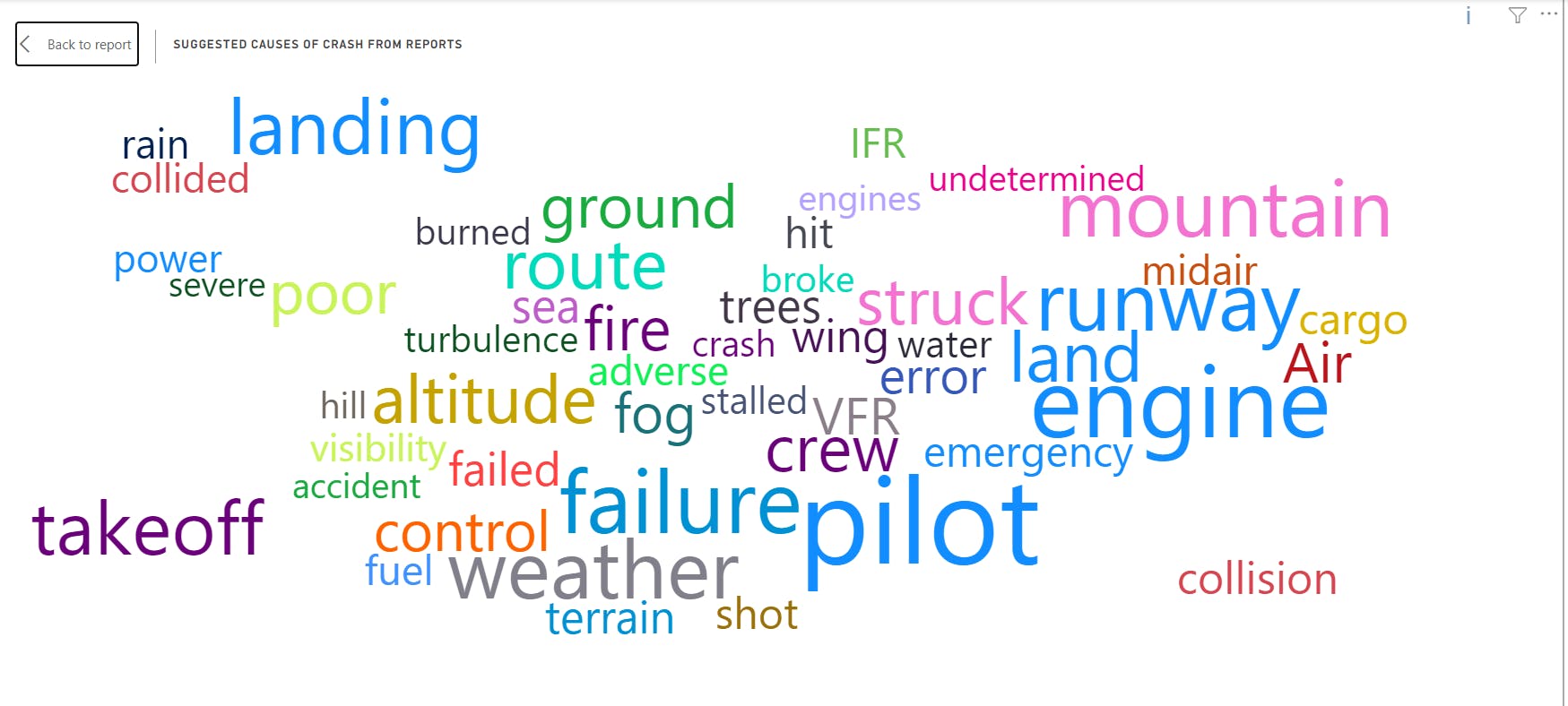
Here is a dashboard showing all the charts put together.
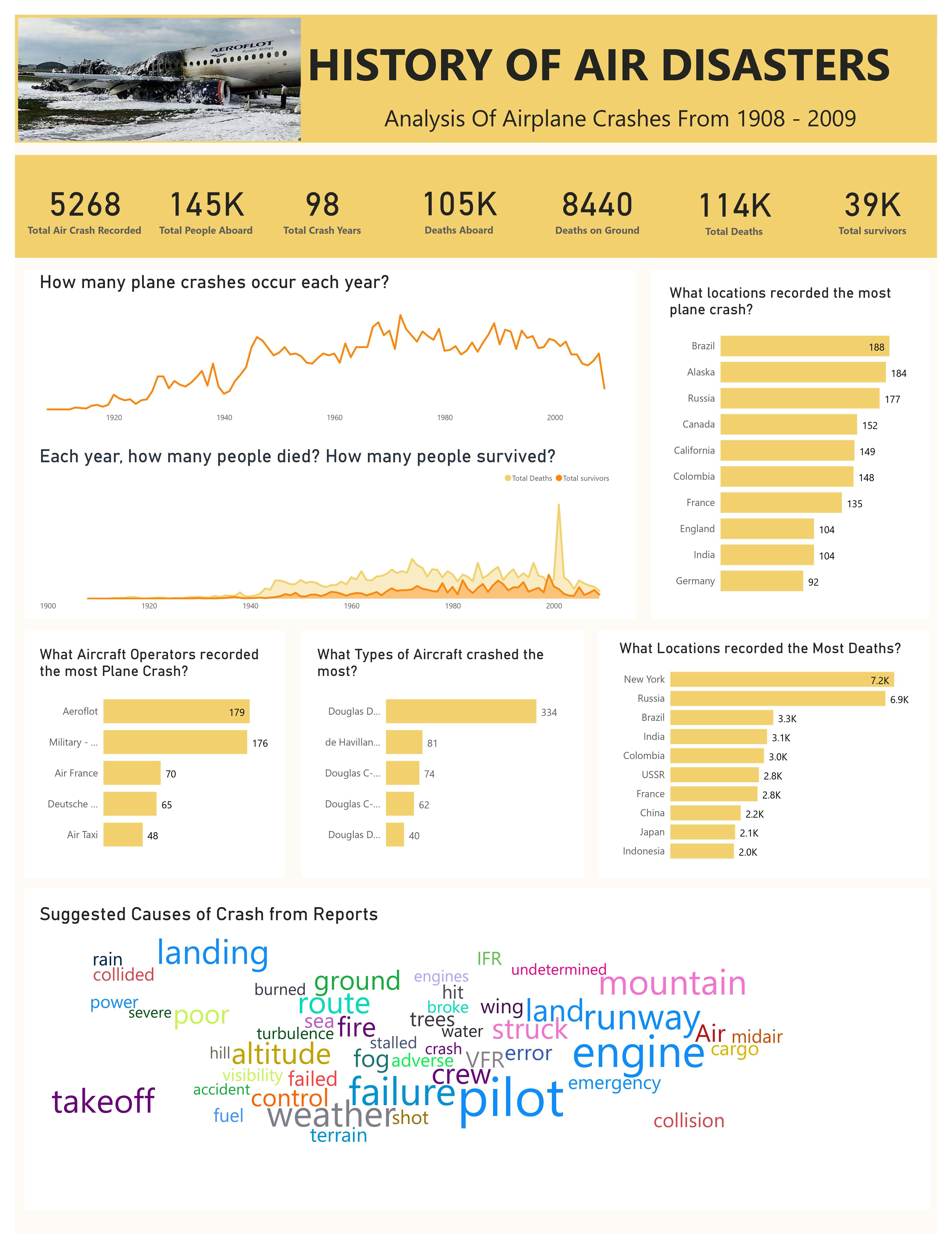
From aviation and plane crash statistics, there has been an applaudable decline in the rate of crashes in recent years.
The decline is attributable to the collective efforts of pilots who do their best while flying and the crew members who help passengers apply safety measures.
Accolades are given to the flight engineers that ensure the airplane is in proper working order and implement the never-ending technologies put in place to make air the safest mode of transportation.
